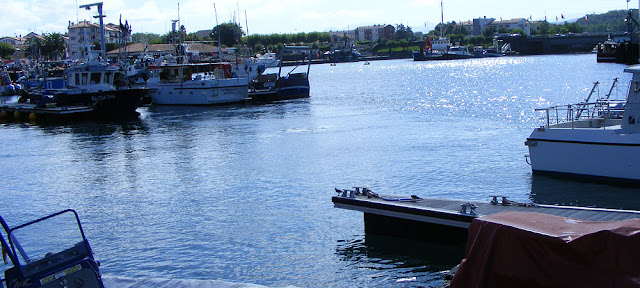Looking out at the boats moored in the harbour at Saint Jean de Luz in September last year I kept seeing birds flickering past the corner of my eye. I couldn't get a proper bead on them for ages. Then a couple landed on a jetty quite a way from me. After that they moved and landed on a nearer jetty and finally sat there long enough for me to get photographs.
They turned out to be Ruddy Turnstone Arenaria interpres (Fr. Tournepierre à collier), a bird I have never knowingly seen before. Very attractive little waders with pretty slightly rusty wings, white backs, bellies and bibs, orange legs and salt and pepper streaked crowns.
They are very long distance migrants, wintering in the southern hemisphere as far away as South Africa and Australia, and breeding in the high Arctic. In between some of them spend time on the Atlantic coast of France.
************************************************
For details of our private guided tours of chateaux, gardens, wineries, markets and more please visit the Loire Valley Time Travel website. We would be delighted to design a tour for you.
We are also on Instagram, so check us out to see a regularly updated selection of our very best photos.
We are also on Instagram, so check us out to see a regularly updated selection of our very best photos.



2 comments:
I googled these to get a closer look. The Cornell Lab describes them as being like a calico cat, which seems appropriate. Apparently they are found in North America, but although I've lived on both coasts, I don't recall ever seeing one. Some over winter in Australia according to Cornell.
Calico cat is a very good comparison I think.
Post a Comment